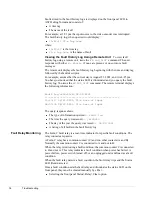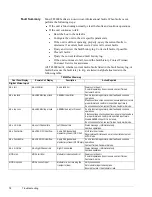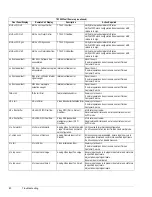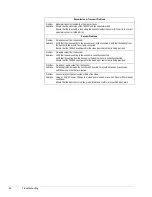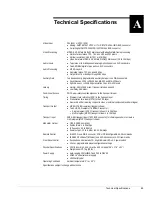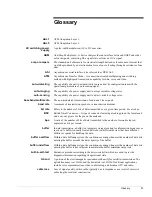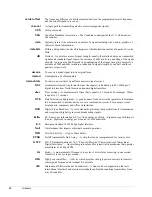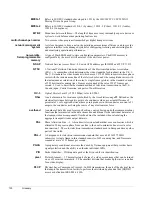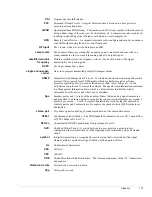
90
IF Looptest
4. From the Audio Encoder menu select the type of audio input, either Digital or
Analog. The LCD displays the selected audio menu.
5. Select the required audio slot option. The LCD displays the Enable option
followed by its current setting.
6. Set the Enable option to On.
IRD Looptest
Configuration
Once you have configured the TE3000 for the IF looptest, you must set the IRD to
match the TE3000 configuration. To configure the IRD system parameters, refer
to the operator’s manual which accompanied that IRD, and perform the following
steps:
1. Initialize the IRD to the DVB defaults.
2. Set the decoder RF frequency.
3. Set the decoder LO frequency.
Once the RF and the LO frequencies are correctly set, you are ready to begin
the IF looptest.
Performing the IF
Looptest
After you have configured both the TE3000 and the IRD, check the IRD to ensure
that the demod, decoder, and transport functions all display locked. If any of the
functions display unlocked:
!
Ensure that you have set the TE3000 and IRD parameters correctly
!
Use the troubleshooting guide provided in this manual and in the IRD
operator manual to isolate and correct any problems
!
Contact Tiernan Customer Service if you need assistance
Once the IRD demod, decoder, and transport functions all display locked, continue
to the operational fault check section.
Operational Fault Check
To perform an operational fault check, perform these steps:
1. Clear the fault history memory for both the TE3000 and IRD using the front
panel menus.
2. Verify that the TE3000 Status LED is illuminated green, indicating normal
operation with no faults.
3. The TE3000 is designed to present flawless video and audio. If the video is
not clean, the audio is not clear, or if faults are occurring, use the
troubleshooting chapter of this manual to correct any faults.
Testing the TE3000
Operational Features
While your system is configured for the IF looptest, you can also perform a few
operational tests to evaluate the effectiveness of various parameters for your
operations.
For example, you may want to observe video performance at resolutions other
than 720 pixels per line, or you may want to disable audio channel B to allocate
more transport bits to the video. Increased bits allocated to video will improve
performance of fast moving complex video scenes passing through the
compression system.
Complete lists of configuration parameters and the commands for changing them
are provided in Chapter 3 for the front panel and in Chapter 4 for a remote unit.
Summary of Contents for TE3000
Page 10: ...viii Preface ...
Page 14: ...4 TE3000 Overview ...
Page 52: ...42 Using the Front Panel ...
Page 94: ...84 Maintenance and Software Upgrades ...
Page 96: ...86 Technical Specifications ...
Page 102: ...92 TE3000 PID Assignments ...
Page 112: ...102 Glossary ...

